Catalpa, Catalpa speciosa
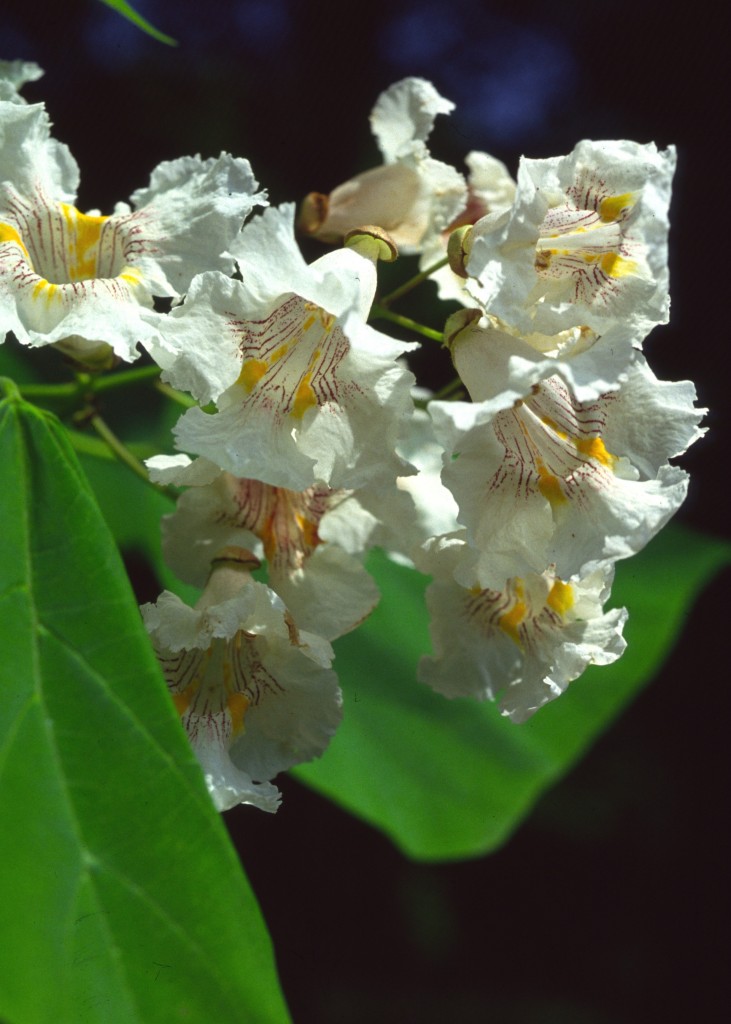
The catalpa’s white week is ending there
in the corner of my yard. It has its arms full
of its own flowering now, but the least air
spills off a petal and a breeze lets fall
whole coronations….
-John Ciardi
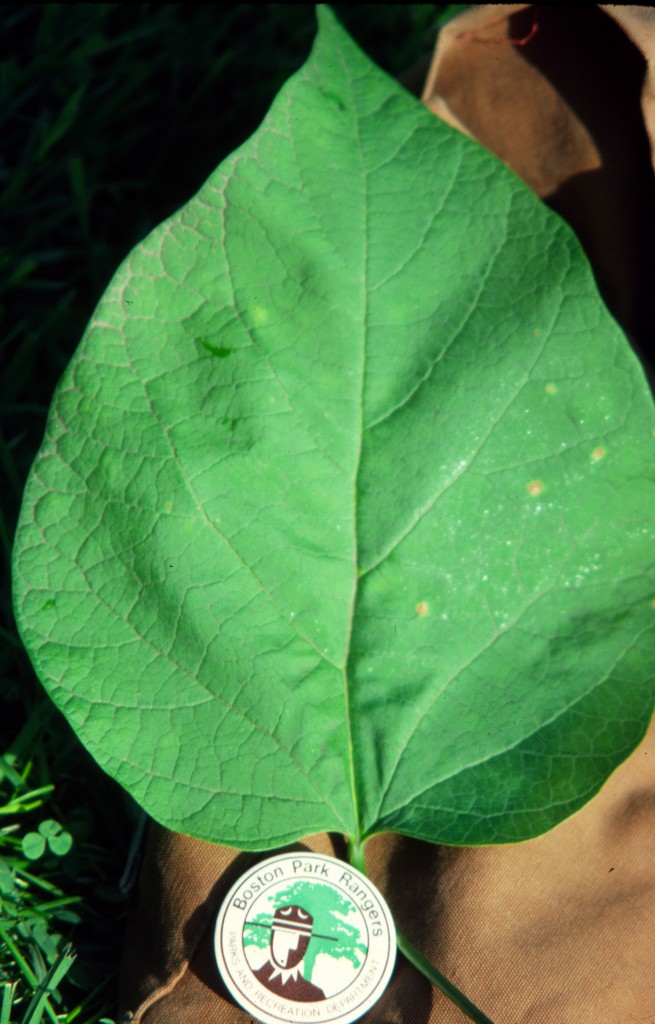
Early in June is a fine time to seek out the Catalpa, Catalpa speciosa, a tree often described as having a coarse texture to its trunk and branches, yet producing beautiful, flamboyant flowers. Noted horticulturist and author, William Cullina, in his 2002 book, Native Trees, Shrubs and Vines, vividly describes it as “…large, frilled flowers possessing a hothouse beauty strangely at odds with the visage of the tree itself. The effect is akin to a heavyweight boxer in drag.” Undoubtedly, the flowers are its chief ornamental asset. 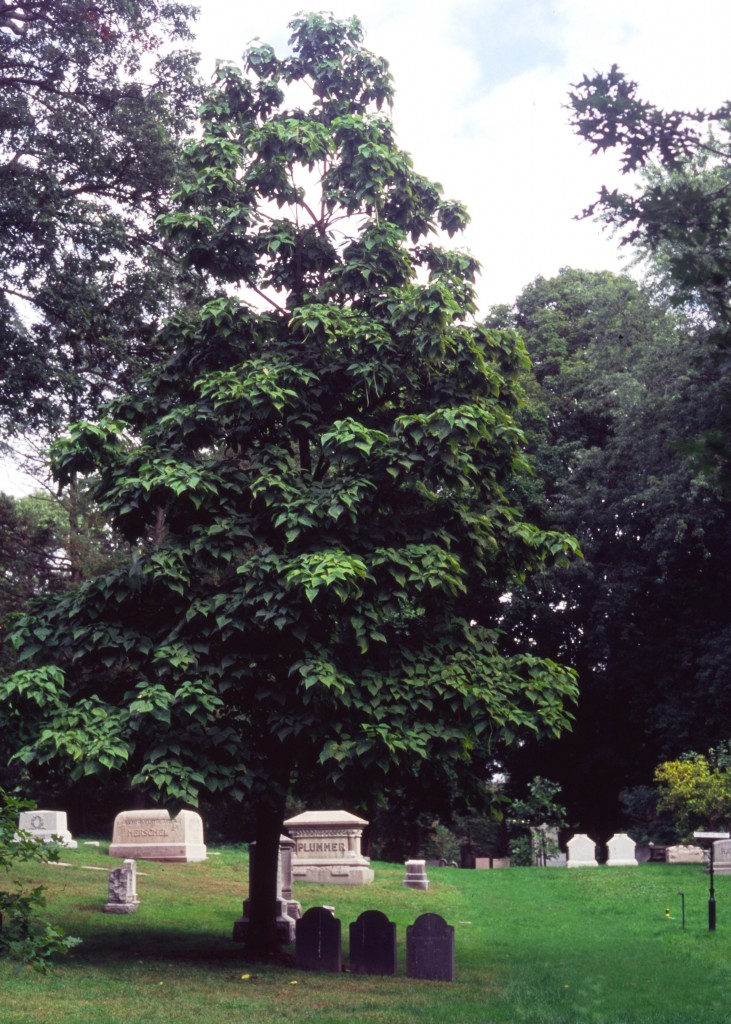 The 2-inch long and wide, short tubular-shaped white flowers are enhanced with frilled edges, and multiple purple speckled rows lead into the flower, a kind of pollinators signage or GPS directional. In the midst of this purple signage are two elongated, yellow or orange splotches, runway landing lights for bees and other pollinators. Multiple flowers occur together in 4- to 8-inch-long terminal panicles. When these artfully designed flowers are successfully fertilized, they produce many seeds for the succeeding generation, contained within a distinctive 8- to 20-inch-long thin capsule. This led some to also refer to catalpas as Indian bean trees. Etymologically speaking, the word catalpa originated with the Creek Native Americans. Its 6- to 12-inch-long leaves, often heart-shaped with an entire margin, are late to emerge and offer no fall color.
The 2-inch long and wide, short tubular-shaped white flowers are enhanced with frilled edges, and multiple purple speckled rows lead into the flower, a kind of pollinators signage or GPS directional. In the midst of this purple signage are two elongated, yellow or orange splotches, runway landing lights for bees and other pollinators. Multiple flowers occur together in 4- to 8-inch-long terminal panicles. When these artfully designed flowers are successfully fertilized, they produce many seeds for the succeeding generation, contained within a distinctive 8- to 20-inch-long thin capsule. This led some to also refer to catalpas as Indian bean trees. Etymologically speaking, the word catalpa originated with the Creek Native Americans. Its 6- to 12-inch-long leaves, often heart-shaped with an entire margin, are late to emerge and offer no fall color.
Compare our above description with that of the famous English naturalist Mark Catesby (1682-1749), whose early 18th-century explorations resulted in the first published account of the flora and fauna of North America, Natural History of Carolina, Florida and the Bahama Islands (1731-1747). Catesby wrote, “…the Leaves shaped like those of the Lilax, but much larger, some being ten inches over. 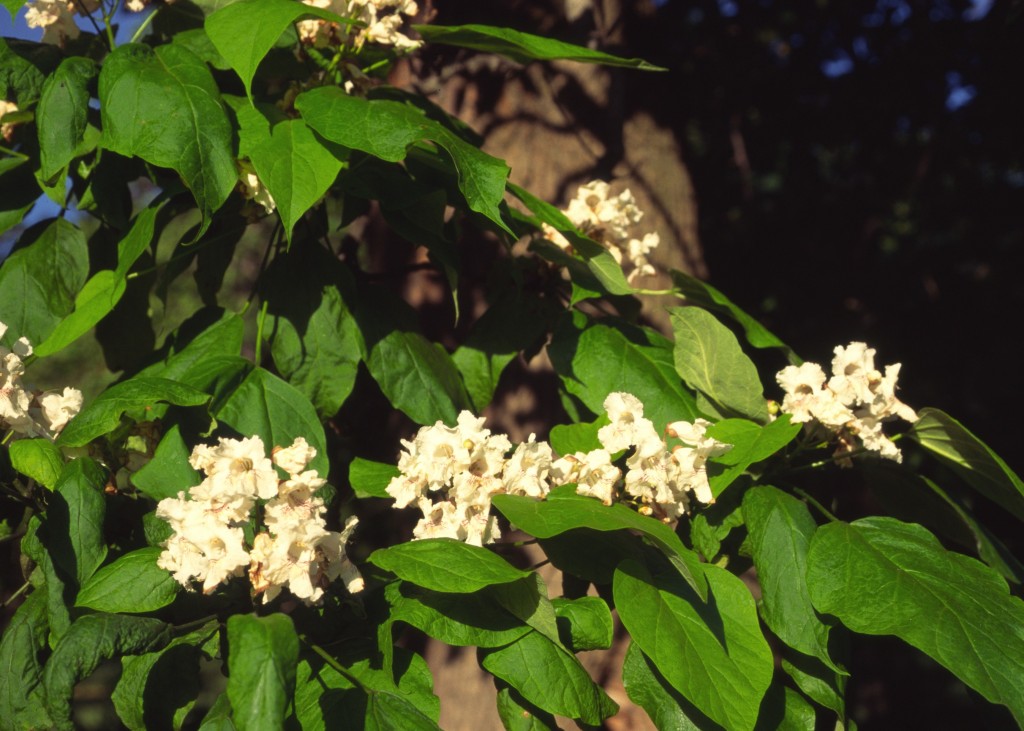 In May it produces spreading bunches of tubulous flowers, like the common Fox-glove, white, only variegated with a few redish purple spots and yellow streaks on the inside….These flowers are succeeded by round pods, about the thickness of one finger, fourteen inches in length; which, when ripe, opens and displays its seeds, which are winged, and lie over each other like the scales of fish. This tree was unknown to the inhabited parts of the Carolina till I brought seeds from the remoter parts of the Country. And tho’ the inhabitants are little curious in Gard’ning, yet the uncommon beauty of the tree has induc’d them to propagate it; and ‘tis become an ornament to many of their gardens, and probably will be the same to ours in England, it being as hardy as most of our American Plants…”
In May it produces spreading bunches of tubulous flowers, like the common Fox-glove, white, only variegated with a few redish purple spots and yellow streaks on the inside….These flowers are succeeded by round pods, about the thickness of one finger, fourteen inches in length; which, when ripe, opens and displays its seeds, which are winged, and lie over each other like the scales of fish. This tree was unknown to the inhabited parts of the Carolina till I brought seeds from the remoter parts of the Country. And tho’ the inhabitants are little curious in Gard’ning, yet the uncommon beauty of the tree has induc’d them to propagate it; and ‘tis become an ornament to many of their gardens, and probably will be the same to ours in England, it being as hardy as most of our American Plants…”
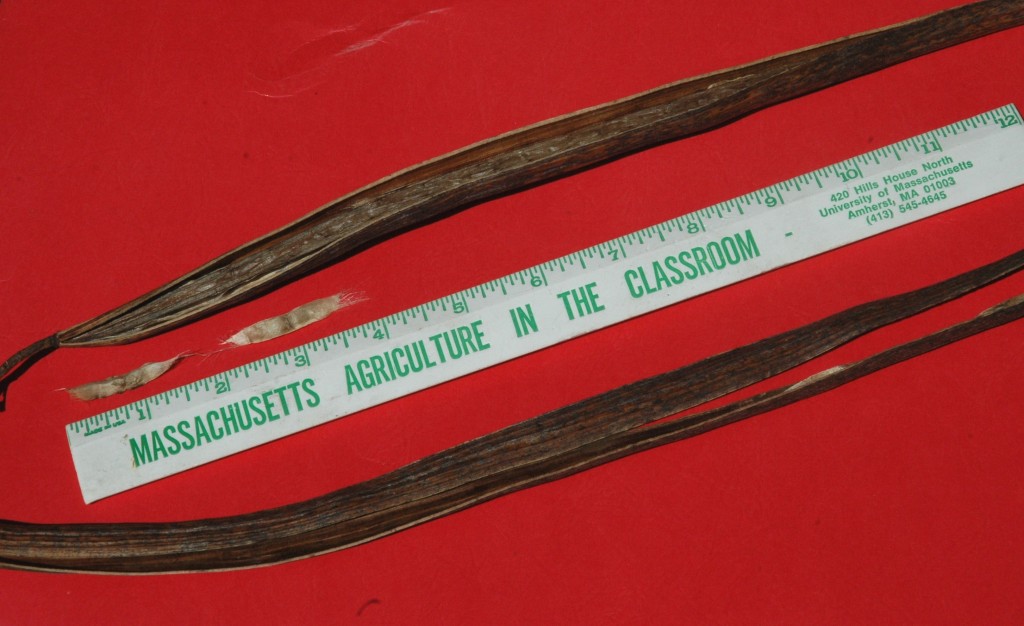
Catesby’s words were prophetic, and the catalpa became popularly planted on both continents. In the 1998 edition of Empire’s Nature, Mark Catesby’s New World Vision, edited by Amy R. W. Meyers and Margaret Beck Pritchard, we find the following encomium to catalpa: “Each season, along the streets of London and by the Houses of Parliament, it comes late into leaf and flower….thus each time cabinet ministers are driven from the Commons to 10 Downing Street, they take stock (whether they realize it or not) of the superb “Indian Bean Trees” that beautify the metropolis. They pay tribute thereby to the work of Mark Catesby in the early import trade.”
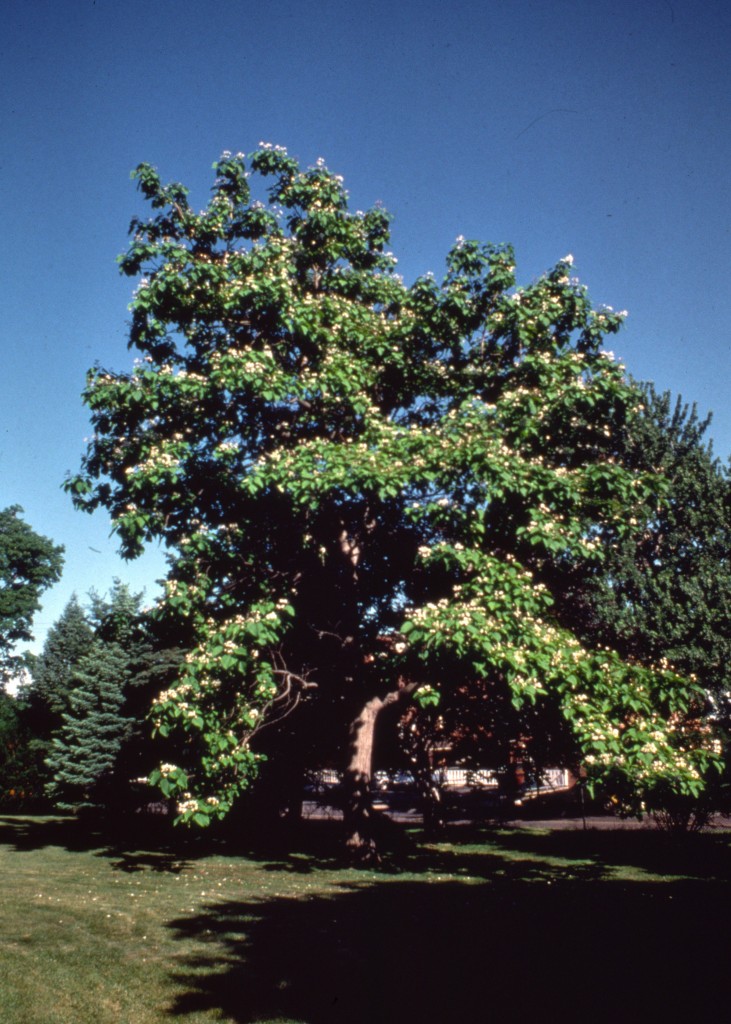
Catalpa has fallen from the wide popularity it once had in the Victorian era, but if you don’t have imminent travel plans for Downing Street, you may view Mount Auburn’s Catalpa speciosa on Spirea Path. On your early June visit, look for a more recent hybrid, Catalpa x erubescens, on Wiegelia Path. It produces emerging leaves with a darker/purplish hue, along with the trademark flamboyant flowers.
This is what succulence is:
the trumpets of your blossoms
spilled across the path,
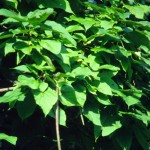
the centers of their white funnels
striped orange and spotted purple.
Inhaling your fragrance,
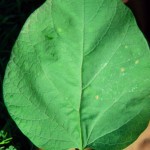
I am unaware of the source,
Until I find myself standing beneath you.
As a trail of fallen petals
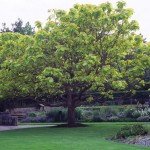
Disappears into the swale,…
-Wally Swist
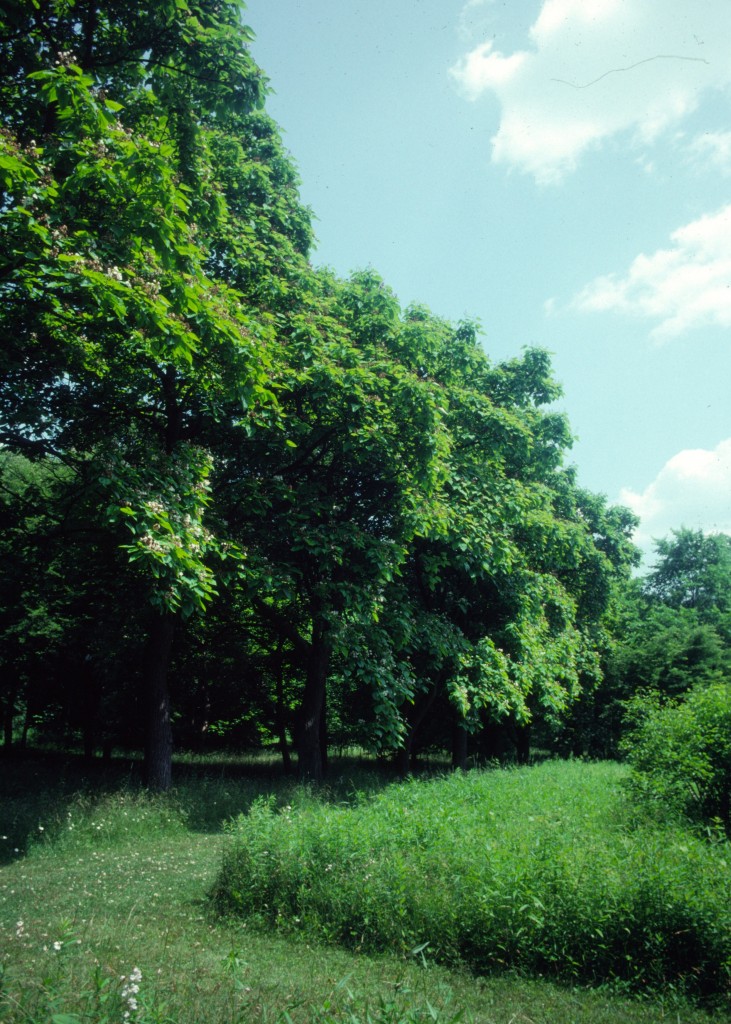
Catalpas blooming up and down Catalpa Street… – Mike Puican
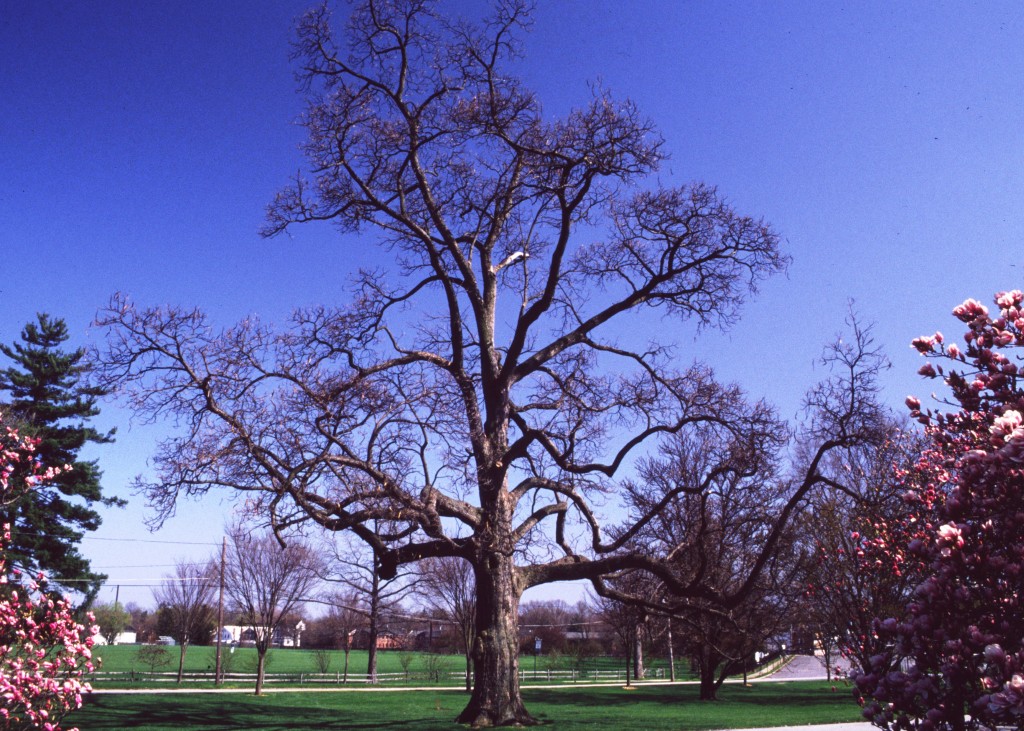
Leave a Reply